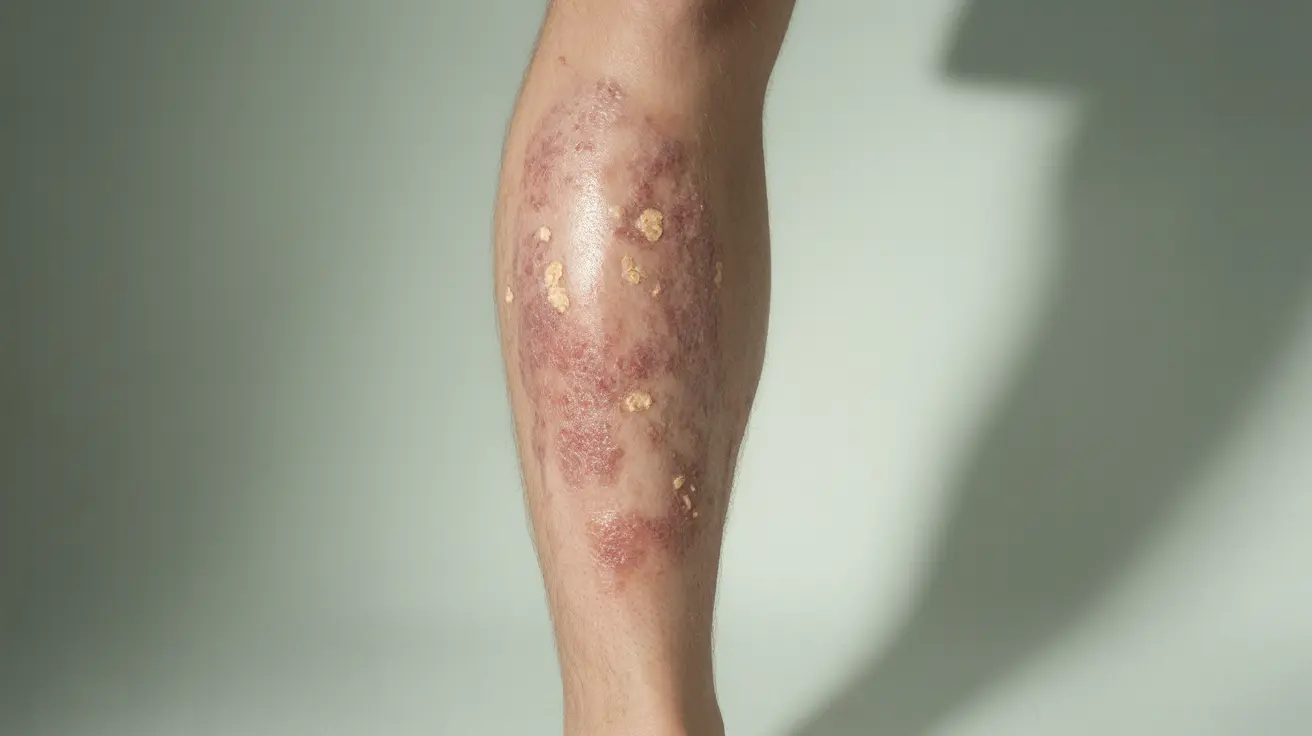A rash on the shins can be a frustrating and uncomfortable condition that affects many people. Whether it's caused by eczema, contact dermatitis, or other skin conditions, understanding the underlying causes and proper treatment approaches is essential for finding relief. This comprehensive guide will help you identify, manage, and prevent shin rashes effectively.
Common Symptoms of Shin Rashes
When a rash develops on your shins, it typically presents with several distinctive characteristics:
- Red, inflamed patches of skin
- Dry, scaly, or flaky areas
- Intense itching or burning sensation
- Small bumps or blisters
- Thickened or leathery skin texture
- Possible skin discoloration
The appearance and severity of symptoms can vary depending on the underlying cause and individual factors. Some people may experience mild irritation, while others might deal with more severe symptoms that affect their daily activities.
Common Causes and Types
Eczema (Atopic Dermatitis)
Eczema is one of the most common causes of shin rashes. This chronic inflammatory condition can be triggered by various factors:
- Environmental allergens
- Stress
- Changes in weather
- Certain fabrics or materials
- Harsh soaps or detergents
Contact Dermatitis
This type of rash occurs when the skin comes into direct contact with irritating substances or allergens. Common triggers include:
- Harsh cleaning products
- New skincare products
- Certain fabrics or dyes
- Plant materials (like poison ivy)
- Metal jewelry or watch bands
Treatment Options and Home Care
Managing a rash on your shins often requires a multi-faceted approach:
Immediate Relief Measures
- Keep the affected area clean and dry
- Apply cool compresses to reduce inflammation
- Use over-the-counter hydrocortisone cream
- Take oral antihistamines for itching
- Wear loose, breathable clothing
Long-term Management
For ongoing care and prevention, consider these strategies:
- Maintain a consistent skincare routine
- Use fragrance-free moisturizers regularly
- Identify and avoid personal triggers
- Choose gentle, hypoallergenic products
- Keep a symptom diary to track flare-ups
Prevention Strategies
Preventing shin rashes involves several key practices:
- Protect your legs from extreme weather conditions
- Wear appropriate protective gear during activities
- Choose breathable fabrics for clothing
- Keep skin well-moisturized
- Avoid known irritants and allergens
When to Seek Medical Care
While many shin rashes can be managed at home, certain symptoms warrant professional medical attention:
- Severe pain or swelling
- Signs of infection (warmth, increasing redness, pus)
- Rash that spreads rapidly
- Fever or other systemic symptoms
- Rash that doesn't improve with home treatment
Frequently Asked Questions
What are the common symptoms of eczema that appears as a rash on the shins?
Common symptoms include red, itchy patches, dry and scaly skin, possible small blisters, and areas of thickened skin. The rash may be particularly itchy at night and can become worse with scratching.
What causes eczema to develop on the shins, and which types are most common?
Shin eczema can be triggered by environmental factors, stress, allergens, or genetic predisposition. The most common types affecting the shins are atopic dermatitis and contact dermatitis, often exacerbated by dry weather or friction from clothing.
How can eczema on the shins be effectively treated and managed at home?
Effective home management includes regular moisturizing, using over-the-counter anti-itch creams, applying cool compresses, and keeping the area clean and protected. Using gentle, fragrance-free products and avoiding triggers is also crucial.
What lifestyle changes and preventive measures can reduce the risk of shin eczema flare-ups?
Key preventive measures include maintaining good skin hygiene, using appropriate moisturizers, wearing breathable fabrics, avoiding known triggers, managing stress, and protecting the skin from extreme weather conditions.
When should I see a doctor for a rash or eczema on my shins?
Seek medical attention if you experience severe pain or swelling, signs of infection, rapidly spreading rash, fever, or if the rash doesn't improve with home treatment. A healthcare provider can properly diagnose the condition and recommend appropriate treatment options.




